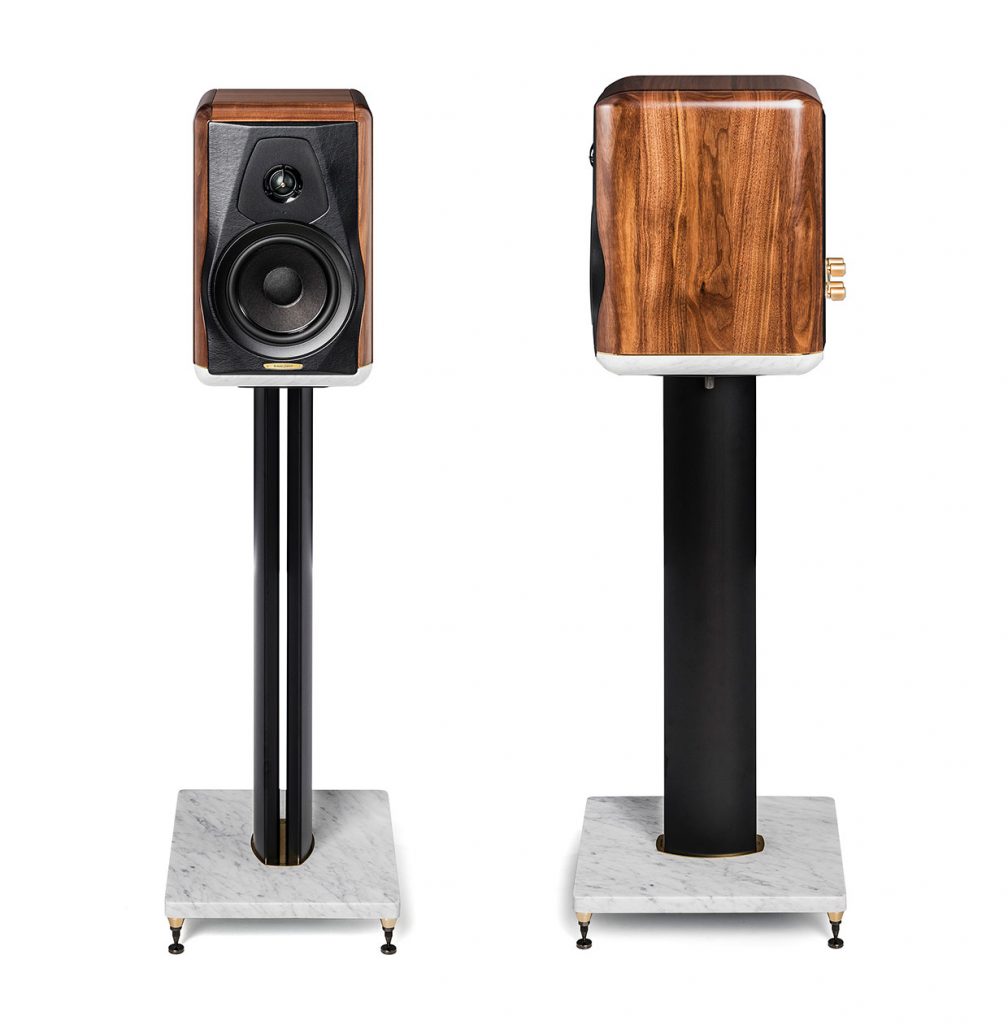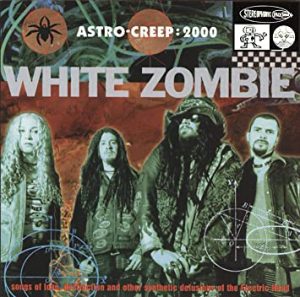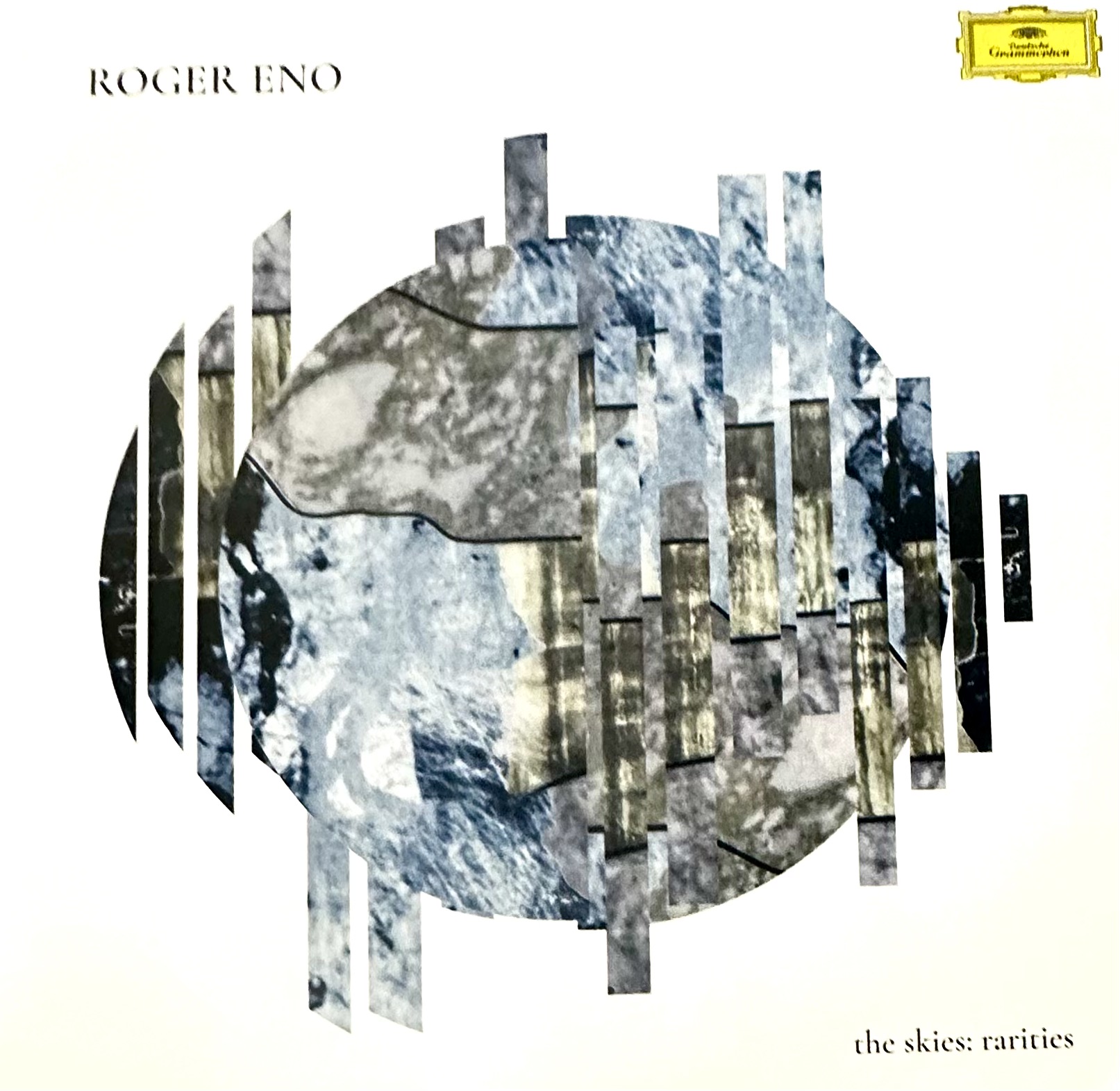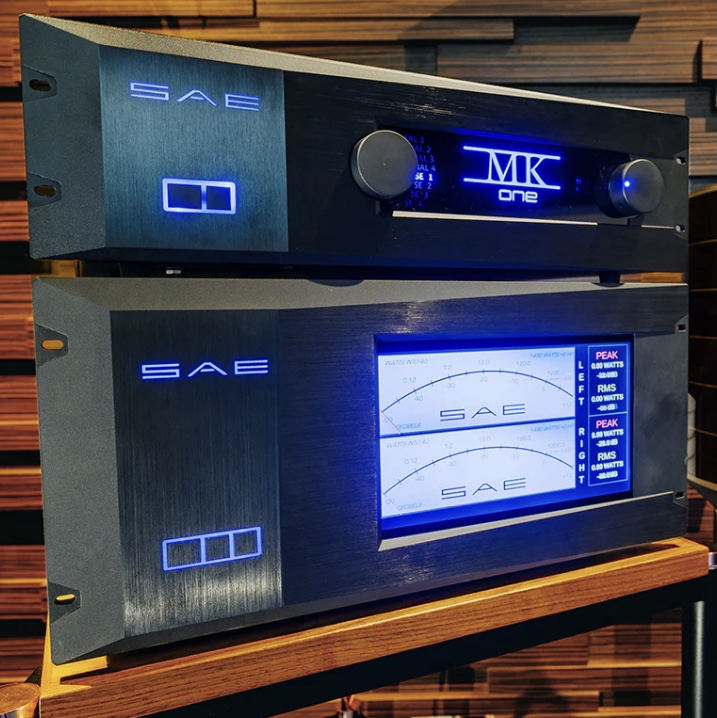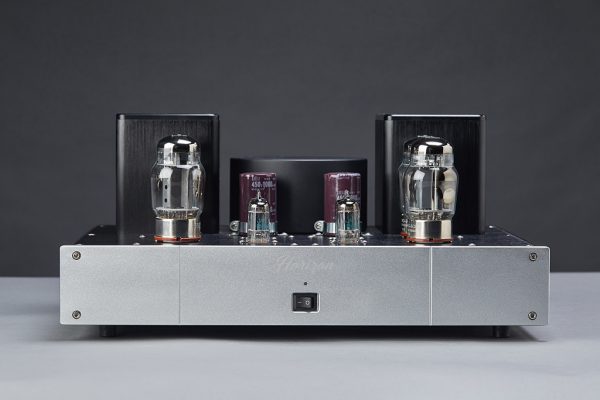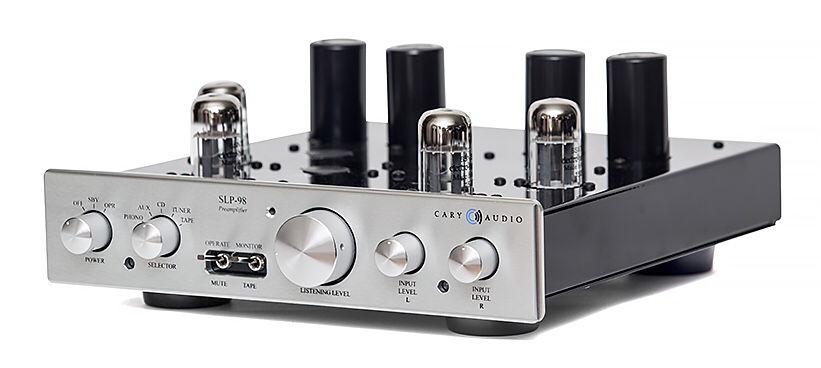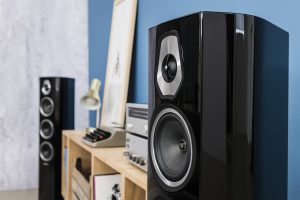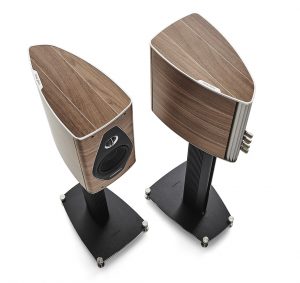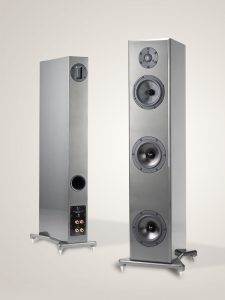I have always had a penchant for things Italian. Ferrari, Lamborghini, Panerai watches, DaVinci, the Amalfi coast, Portofino, and on and on. Italians just have a flair for things that seems unmatched by any other group, especially when it comes to designing audio gear. Form, function, and beauty always seem to go hand in hand with Italian design.
Sonus Faber speakers always bring with them a beautiful aesthetic at every level. Beautiful woods, exquisite design, wonderful sound and quality that a number of other brands only hope to emulate. The Sonus Faber Electa Amator III is no exception. As the III indicates, this is the third iteration of this speaker since the original debuted in 1987. The Electa Amator II came a decade later, and here we are with the latest version as part of the Heritage series. The original series I was a small two driver, ported affair similar to the new one. The series II contained a rear facing passive driver to enhance the bass.
The review samples arrived on a pallet along with the matching stands. Beautiful walnut wood surrounds the speaker, leather clads the baffle, and they have a Carrara marble bottom that adds to the density and weight of the speaker cabinet, not to mention the elegant look. This bottom also matches the base of the rather stout stands. The knuckle wrap test left me with a bit of sting on the knuckles. These are stoutly made boxes for sure. Sonus Faber packages their products extremely well, and everything is neatly packaged and easy to remove. Assembling the stands was a 10 minute affair, and setting up the speakers and stands took about 15 minutes total once out of the box. The speakers utilize Sonus Faber's elliptical speaker binders. These binders are only eclipsed, in my experience, by the single knob binding post found on the Paradox Pulse amps I reviewed last year for ease of use, and getting a very tight clamping. (As you get a bit older and develop arthritis in your hands these easier to use binding posts become more than a nice accessory. They are joyous!)
Measurements are 375 x 235 x 360 mm, or 14.8 x 9.3 x 14.2 inches and weigh 14.6 kilos, or 32.2 pounds each. The matching stands are 720 x 300 x 350 mm, or 28.4 x 11.8 x 13.8 inches. 11.2 Kg–net weight, or 24.7 lbs–net weight for each. The stands utilize matching Carrara marble as the base, giving the entire ensemble an elegant and cohesive look. The speaker employs a 2 way, vented design cabinet. The tweeter is the H28 XTR-04 DAD™, diameter is 28mm, or 1.15 inches and the Mid Woofer is the MW18XTR-04 with a diameter of 180mm, or 7.4 inches. Crossover occurs at 2500kHz, and sensitivity is rated at 88dB. Frequency response is stated at 40Hz - 35kHz. Nominal impedance is 4ohms. The 28mm tweeter employs Sonus Faber's Damped Apex Dome (DAD) technology, which is focused on maintaining linear phase characteristics at the dome's apex. Covering the tweeter is a thin three-pronged bracket with a small conical central nub just in front of the dome diaphragm to aid high frequency dispersion. This is said to aid in extending the frequency range of the tweeter. The new mid woofer was designed to provide the listener with both bottom end extension and power, while providing clarity, expression, and resolution throughout the midrange bands, while delivering more than acceptable bass extension.
It should be noted that the matching stands are really a requisite for getting the most out of the speakers, especially in the bottom octaves.
I have to admit that I found it hard not to fall in love with these speakers on the appearance alone. So well put together, and looking like a piece of fine furniture. The compact size is also an attractive part of the speaker. It just looks elegant and unobtrusive.
Since they were new I let them run in with background music for roughly 60 - 70 hours before sitting down for any serious listening. What I did notice right out of the box, though, was the following two things:
- They like power.
- The bass was much deeper than I expected.
When I sat down for my first listening session, I utilized the Cary 805C amps to power them. At 50-watts into 4 ohms per channel they are not power house amps. While they drove the Sonus Fabers to decent levels, they certainly were not going to shake the foundation or move a significant amount of air unless they were turned up past half way. I listened to them at moderate levels for the first week of the review period. What the combo provided was extreme detail at all levels, intense focus and soundstage depth, width and height, and an overall sweet sound that comes with high end triode amps. On top of those requisites that are required of any decent to great speaker, they did the disappearing act better than any other speaker I have ever reviewed. I am not sure that "disappearing" is truly accurate, they were, quite simply put, not even there. I have reduced the lighting in my room to cut down on any unnecessary current running during the most intense listening sessions, and I simply could not place where the speakers were in the darker room. Impressive is not the word, yet I am at a loss for a better word. Maybe astonishing beyond words sums it up. They are no one trick pony though. They do so much more.
I placed the speakers approximately seven feet apart and well-out into the room where my VS VR4s normally reside. To find the best possible location for the speakers I moved them around, experimenting with different distances front to back and side to side, and ended up right where I started. I have fiddled with speaker placement quite a bit in my system, and it seems that what is good for the goose (the VR4) is also good for most ganders (other speakers).
In the final position, the Electa Amator IIIs delivered voices with a tonal texture and realism I have not had with many other speakers in my system, and that is saying a great deal. That being said, they also just added so much to the experience with varying layers of soundstage. Everything was life-like and full bodied. Sometimes I feel with some speakers the sound staging getting cut off like a partial body apparition. Not with the Electa Amator III. Size and proportion were all there, along with individual images of the musicians placed into the space as if they were in the room, and with the requisite space between them. I would chalk all of this up to exquisite design and driver integration.
Not really knowing what to expect, I thought why not test them to the extreme by playing the whole first side of Istvan Kertesz and the Vienna Philharmonic Orchestra's performance of Dvorak's Symphony No. 5 in E Minor op.95. (Decca 009 2289 SXL 2289). I then went for side B. Why ruin a good thing half way through? This is a very dynamic recording with a lot of large scale transitions from whisper quiet strings to full orchestral blast, with tympanis at full throttle and horns blaring. The Electa Amator IIIs handled all but the lowest frequencies without so much as a hint of strain. Where the same recording on my VSR4s plumb the depths as far as the music will go, the Electa Amator IIIs simply dropped the last 15Hz. The drop off was linear but steep. That being said, the music was no less thrilling, and the presentation was exceptionally large considering the modest size of the speakers. I never detected any chuffing on difficult passages from the rear firing port. Quite the contrary. The music was seamless and incredibly smooth across the board.
I decided next to spend a few hours focused on the female voice. Most notable though was Peggy Lee's "Fever" off the album The Best of Peggy Lee, the Capital Years. Without a doubt, a top pick among many audiophiles for the sparse accompaniment and velvety smooth presentation of her voice. The Electa Amator IIIs delivered the full Monty on this track. Peggy right out front, center stage, and the air around her was amazing, standing in my listening room, and I could feel her breath and hear every nuance in incredible detail.
I also wound up my new favorite (second fave next to Eva's "Somewhere Over the Rainbow") female vocal performance, and that is Melody Gardot's, "Deep Within the Corners of My Mind" from the album Live in Europe. Another stark recording with Melody on vocals and Stephan Braun on the cello. This is one of the most haunting, and yet alluring songs I have heard in a while. Her vocals are almost stripped bare, and the solo cello accompaniment leave you just deeply moved. It is so intimate and so intensely personal in delivery. Through the Electa Amator IIIs the performance hit so deep as though it penetrated the soul. Performances like this, at least in my view, are the ones that truly show just how well a particular piece of gear improves, or impacts the enjoyment of the music. This is particularly true of speakers. The ability of the Electa Amator IIIs to transmit the delicacy of Melody's vocals along with the wonderful touch that Stephan Braun brings to the cello makes this one of the most enchanting recordings I have discovered in quite some time. The Electa Amator IIIs delivered this track, with absolute perfection or as close to that as any speaker can get. It brought the live performance from a large room to the up close, "personally there" experience in my listening room.
Following the female vocalists I decided to delve "Into the Mystic" with Van Morrison (see how I did that) from the Moondance album. The subtleties in this track were so very well presented. The acoustic guitar muted strikes came across with a subtle, yet decisive smack that gave it a stronger sense of purpose as an accent to the chords. The percussiveness was palpable. The shakers had great attack and decay. This was all part of the heightened delivery of the details that made the speakers so alluring. Monitor speakers usually excel in this respect. One of the many reasons I love the VR4s is that they are essentially monitors sitting atop two large passive sub units. The Electa Amator IIIs are just exceptional in this respect.
For a little ore rambunctious and raucous mood I went after "More Human than Human" by White Zombie from the album Astro Creep. The band plays it rather safe on this album, never really getting too far away from their "white-trash-on-acid-metal" roots. Rob Zombie is certainly enigmatic if nothing else, and his musical efforts are usually quite distinctive, and this track is no different. A throbbing beat and distorted vocals along with searing guitars makes it a challenge for any speaker to navigate the ups and downs gracefully and with poise. The Electa Amator IIIs come alive and deliver the heavy handed rhythms and dynamic shifts without breaking a sweat. While they are not the definitive last word on drive or outright precision in the heavy rhythmic sections, they still perform to a fully satisfying level, and kept me focused on the music and not the speaker itself.
All of the above notes were from driving the speakers with the Cary Audio 805Cs. As previously mentioned, they are not powerhouses. Things really changed up when the amplifier power went up and over 100 watts per channel. To say the speakers really came alive would be a dangerous understatement. When fed by the music envoys at 200 watts per channel the dynamics were more than just slightly improved. The bass was stronger, and even seemed to plumb a little further before dropping off, and definitely delivered with a good deal more impact. I could have kept the Electa Amator IIIs with the 50 watts and been satisfied indefinitely because the overall balance and sound was so sweet and liquid in presentation. That is a hallmark of the Cary amps. It was quite apparent that whatever the amp delivered to the speaker, it was then passed on through the speaker to the listener without adding or taking away anything at all. Neutral and smooth as it can get. Once you feed them more power though, it might be difficult to go back to the lower power. The caveat here is we are talking about hi-end top quality amplifiers. As I said, they enjoy power and it seems that 100 watts is where they really respond to the increase, and seriously start to present sound levels that can border on painful. I just do not listen to music that loudly these days. None the less, if I was putting a system together with the Electa Amator IIIs as my speaker, I would want to pair them with at least 100 watts of top notch power. That configuration would bring out the best of the speakers, and in the process they would pull the best out of your source material and the amplification. If the bass isn't enough from the speakers themselves, then add one or two subs from the Sonus Faber line, and I am certain that would please the most ardent of bass fans, plus give you an incredible disappearing act for a moderate sized room. If you have a huge room perhaps you should look elsewhere, but small to medium sized rooms would make for the perfect place to have this system.
In essence, this is a very fitting ode to the company as a 35th anniversary model. It basically hits all the check marks we have come to expect from Sonus Faber. Incredible build quality, state of the art cross-over and driver design, stunning aesthetics, a solid history, and superb customer service. It has to rate up there in my top 5 favorite monitors of all times, and quite honestly it gets very close to the Extrema of fabled lore. In some ways it seemed a smoother speaker in the mids and highs, and only lacked the more substantial bottom end of the Extrema (still my reference point for monitors along with the Totem Mani-Two). I would gladly own these speakers, and when the time comes to downsize it will be at the top of my list to consider as my forever speaker going into my final years. In the meantime, I can say without a doubt that anyone would be hard pressed not to find much to love about the new Sonus Faber Electa Amator III. What a crowning achievement in the monitor class of speakers. Check them out!
Electa Amator III
Retail: $8500
Matching Stands
Retail: $1500
Sonus Faber S.p.A
Vai A Meucci, 10
36057 Arcugnan (VI) - Italy
https://www.sonusfaber.com/en/
Sonus Faber USA
David Mascioni,
Senior Marketing Manager of McIntosh Group.
607.237.2982





